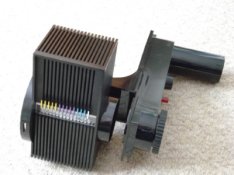TheVDM
Member
Hi, I have finally set up my bathroom darkroom and have been really enjoying it although I cant help but feel that the prints are a little flat in comparison to those printed via the mini lab I use at work.
I am currently using a paterson colour head like the one pictured below, this head has a number of coloured filters (I assume more for colour paper) built in (Cyan, Magenta & Yellow variants), which coloured filter(s) would be the best option for increasing the contrast or am I getting the wrong end of the stick.
Any useful tips for a first time home darkroom owner would be much appreciated.
Regards
Jim
I am currently using a paterson colour head like the one pictured below, this head has a number of coloured filters (I assume more for colour paper) built in (Cyan, Magenta & Yellow variants), which coloured filter(s) would be the best option for increasing the contrast or am I getting the wrong end of the stick.
Any useful tips for a first time home darkroom owner would be much appreciated.
Regards
Jim











